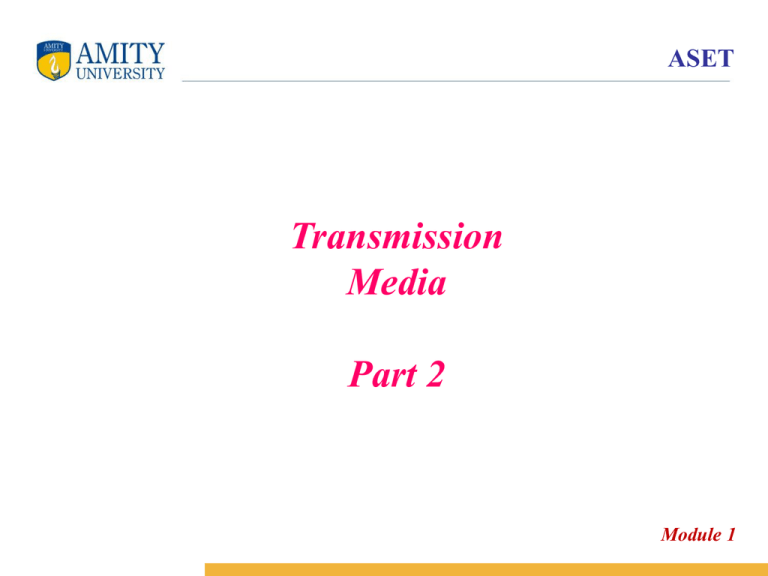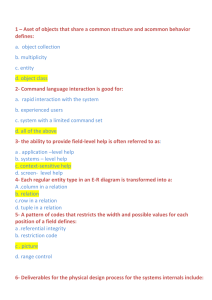Transmission media part 2
advertisement

ASET Transmission Media Part 2 Module 1 Unguided Media ASET • Unguided media, or wireless communication, transport electromagnetic waves without using a physical conductor. Instead the signals are broadcast though air and are available to anyone who has a device capable of receiving them. • The section of the electromagnetic spectrum defined as radio communication is divided into eight ranges, called bands, each regulated by government authorities. Wireless transmission waves ASET ASET Electromagnetic spectrum for wireless communication Propagation of Radio Waves ASET • Radio technology considers the earth as surrounded by two layers of atmosphere: the troposphere and the ionosphere. • The troposphere is the portion of the atmosphere extending outward approximately 30 miles from the earth's surface. • The troposphere contains what we generally think of as air. Clouds, wind, temperature variations, and weather in general occur in the troposphere. • The ionosphere is the layer of the atmosphere above the troposphere but below space. ASET Propagation methods ASET Ground propagation. In ground propagation, radio waves travel through the lowest portion of the atmosphere, hugging the earth. These low-frequency signals emanate in all directions from the transmitting antenna and follow the curvature of the planet. The distance depends on the power in the signal. In Sky propagation, higher-frequency radio waves radiate upward into the ionosphere where they are reflected back to earth. This type of transmission allows for greater distances with lower power output. In Line-of-Sight Propagation, very high frequency signals are transmitted in straight lines directly from antenna to antenna. Bands ASET Band Range Propagation Application VLF 3–30 KHz Ground Long-range radio navigation LF 30–300 KHz Ground Radio beacons and navigational locators MF 300 KHz–3 MHz Sky AM radio HF 3–30 MHz Sky Citizens band (CB), ship/aircraft communication VHF 30–300 MHz Sky and line-of-sight VHF TV, FM radio UHF 300 MHz–3 GHz Line-ofsight UHF TV, cellular phones, paging, satellite SHF 3–30 GHz Line-ofsight Satellite communication EHF 30–300 GHz Line-ofsight Long-range radio navigation ASET • transmission and reception are achieved by means of an antenna • directional – transmitting antenna puts out focused beam – transmitter and receiver must be aligned • omnidirectional – signal spreads out in all directions – can be received by many antennas Omni directional Antennas ASET ASET Unidirectional antennas Satellite Transmission Process ASET satellite transponder dish dish 22,300 miles uplink station downlink station Satellite Transmission Applications ASET • television distribution – a network provides programming from a central location – direct broadcast satellite (DBS) • long-distance telephone transmission – high-usage international trunks • private business networks Radio ASET • radio is omnidirectional and microwave is directional • Radio is a general term often used to encompass frequencies in the range 3 kHz to 300 GHz. • Mobile telephony occupies several frequency bands just under 1 GHz. Infrared ASET • Uses transmitters/receivers (transceivers) that modulate noncoherent infrared light. • Transceivers must be within line of sight of each other (directly or via reflection ). • Unlike microwaves, infrared does not penetrate walls.






